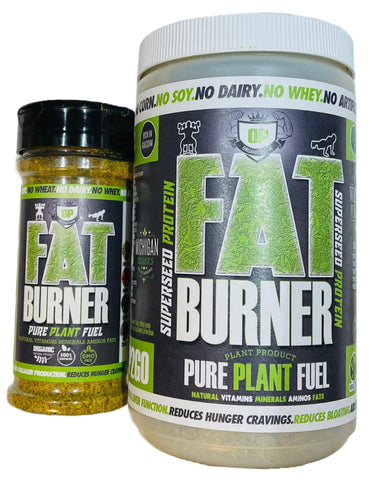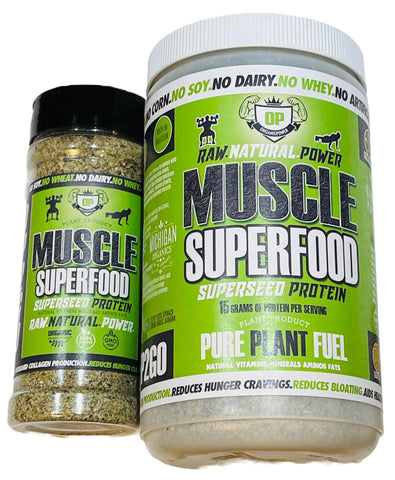Protein powders are highly processed, usually heated to the point that actually denatures the protein, which makes it nearly impossible for the body to recognize and use. The result is higher levels of acidity and toxicity in the body, which can lead to plenty of unwanted illnesses and diseases. Protein powders are often filled with preservatives, genetically modified organisms (GMOs), allergens like dairy (whey protein isolate) and soy, and other synthetic toxins like aspartame, saccharin, and artificial flavors. By the way, if you see “artificial flavors” on the back of any food or supplement label, just know that thousands of “secret” food chemicals can be hidden under this sneaky little label. And in case all that wasn’t enough to get your attention, since protein powders are considered a “supplement,” they’re not even regulated by the FDA.
Consumer Reports conducted an eye-opening study a few years back revealing that several protein powders on the market contain dangerous levels of toxic heavy metals – specifically arsenic, cadmium, and lead.
- The majority of protein powder is just powdered milk: The most popular type of protein powder is whey protein. While the word “whey” probably makes many people think about “wheat”, it could be no farther from the truth. Whey protein powder is processed milk solids. Whey is one of the major protein sources found in cow’s milk. Manufacturers use a variety of methods to extract the whey but, in a nutshell, here is the process: The milk is pasteurized, the whey is separated from casein (the other protein found in cow’s milk) and lactose, it is then purified, dried, and packaged. Powdered milk is also produced in a similar manner. Powder milk, however, retains other elements of milk, such as natural occurring fats, lactose, vitamins, and minerals. Some might argue that these naturally occurring elements make powdered milk superior to whey concentrates.
- They contain heavy metals: Arsenic, cadmium, and lead–to be exact. It is well known that many packaged goods have a minimal tolerable limit for containing these types of toxic metals, and that is why I avoid those products. Heavy metals can lead to kidney problems, neurological disorders, and cancer. The worst part is that it takes your body 5 years on average to rid itself of these toxic elements. Remember arsenic? Yes, people use this to poison and kill other people and it is in your breakfast smoothie.
- They are the most expensive source of protein: Many people believe they are getting a good value from buying protein powder tubs but in reality, they are not. A typical protein tub contains nearly 30 servings of protein at 15 grams each. The cost usually averages to $35 for a name brand product. That is 450 grams of protein. That comes out to about $.08 per gram of protein. Now look at a natural food like chicken breast. I can usually find boneless, skinless chicken breast for $1.99/lb. One lb of raw chicken breast contains roughly 104 grams of protein (note: I used raw because the weight changes drastically upon cooking. Cooked chicken actually has a higher protein percentage than raw chicken.) Using these figures, you can determine that chicken costs $.02 per gram. That means chicken is 4 times as cost effective as protein powder, and in my opinion tastes a hell of a lot better.
- They aren’t real food: Like any other packaged food, no matter how many additives, enzymes and other “state-of-the-art” ingredients you add–packaged food will never out-perform real food. The bioavailabity of vitamins, minerals and other bio-active substances in real food works better in its natural form as opposed to created in some lab. There is a reason why calf’s don’t drink whey protein shakes. It is because cows’ milk has the biological advantage from thousands of years of evolution to provide superior development for the young cow’s development and to build strength. I don’t advocate humans drinking cow’s milk, but imagine if they extracted the protein from human breast milk and then tried to reassemble it in a powder form–oh wait, they do. This is why infants who are breast-fed are more developed than formula fed infants.
- They contain aspartame and other harmful artificial sweeteners: Aspartame and other artificial sweeteners have been linked to numerous ailments over the years. Remember, if it seems to good to be true, it always is. If something taste sweet and doesn’t have calories, there will usually be consequences. 75% of all adverse food reactions reported to the FDA are linked to aspartame; reported reactions include dizziness, nausea, migraines and insomnia. The Mercola health newsletter cites studies linking Aspartame to severe conditions, including brain tumors, multiple sclerosis, Alzheimer’s, mental retardation, epilepsy, chronic fatigue syndrome, Parkinson’s disease, lymphoma, birth defects, fibromyalgia and diabetes. Some others even link artificial sweeteners to deterioration of the nervous system.
- They agitate your allergies: Whey concentrates contain lactose. If you are lactose intolerant, these powders will wreak havoc on your digestive system. Even if you are not, the lactose could still be irritating your seasonal allergies. Lactose is known to harm your microvilli and allow harmful substances (allergens) into your bloodstream.
- Insulin Release Associated With Whey– Which of the two items below cause a greater spike in insulin? White bread or whey protein? Well, as you can probably guess, if you chose the, high glycemic, void-of-all-nutrition white bread: wrong answer. Surprised? Check this out: A 2012 study published in Nutrition & Metabolism identified that the specific amino acids in whey protein stimulate beta cells to secrete more insulin than a similar amount of carbohydrate from white bread. In the presence of insulin, fat burning essentially stops. This makes a whey-protein-only supplement a big-time no-no for evening use, especially pre-bedtime when avoiding spikes in insulin are paramount as metabolism is already slowing down in preparation for its normal, much slower sleep rhythm. The truth is, whey protein simply isn’t an ideal protein to use at any other time other than immediately following exercise, and even then the amount you’re able to absorb on a per serving basis is extremely limited.



